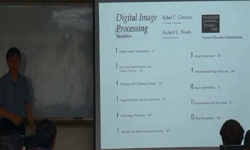Seoul City plans to restore the old waterways of the upper reaches of the Cheonggyecheon stream into an eco-stream. While the covered parts of the stream are being removed for restoration, the author aimed to develop plans to restore the old bridge pl...
http://chineseinput.net/에서 pinyin(병음)방식으로 중국어를 변환할 수 있습니다.
변환된 중국어를 복사하여 사용하시면 됩니다.
- 中文 을 입력하시려면 zhongwen을 입력하시고 space를누르시면됩니다.
- 北京 을 입력하시려면 beijing을 입력하시고 space를 누르시면 됩니다.

Plans to Restore the Shingyo Bridge Following the Restoration of the Baegundongcheon Stream Waterways
한글로보기https://www.riss.kr/link?id=A105240584
- 저자
- 발행기관
- 학술지명
- 권호사항
-
발행연도
2017
-
작성언어
English
- 주제어
-
KDC
330
-
등재정보
KCI등재
-
자료형태
학술저널
-
수록면
65-77(13쪽)
- 제공처
-
0
상세조회 -
0
다운로드
부가정보
다국어 초록 (Multilingual Abstract)
Seoul City plans to restore the old waterways of the upper reaches of the Cheonggyecheon stream into an eco-stream. While the covered parts of the stream are being removed for restoration, the author aimed to develop plans to restore the old bridge placed thereon. As a basic study for the restoration of the Shingyo bridge that existed on the Baegundoncheon stream, which is being restored, this study aimed to explore where to place the bridge and how to restore it. This is based on the investigation and estimation of the original shape of the Shingyo bridge, with the purpose of identifying the most appropriate restoration plans through literary reviews and field surveys. Based on the findings from the investigation and estimation of the original shape of the Shingyo bridge, it is thought that the bridge was built between the end of the 18th century, when the Hanyang Doseongdo was made, and the 1840s, when the Suseonjeondo was made. Given the results of the map and photography analyses, the Shingyo bridge was presumably located in the center-left of Shingyodong Intersection of today. Six parapet stones of the Shingyo bridge remain at present, which are stored in the Cheongwoon Elementary School in Cheongwoon-dong, Jongno-gu. Identified in the photos, the Shingyo bridge was structured with six prop stones and ten parapet stones on six stone pillars. In deciding where and how to restore it, it would be the most appropriate decision to place the restored Shingyo bridge on its presumed original location. However, this is not feasible given the current situation. Hence, the author considered historical and cultural aspects and developed reasonable criteria, under which the new location was chosen, which is 100 m southwards from the presumed original location of the bridge on a roadside with a safety zone and wide pedestrian paths. Two alternatives to placing the bridge on the Baegundongcheon stream were considered, i.e., east-west and north-south directions: the author suggests that the restored bridge be placed in the east-west direction, giving priority to the restoration of the waterways of the Baegundongcheon stream and the original direction of the Shingyo bridge.
목차 (Table of Contents)
- ABSTRACT
- 1. Introduction
- 2. Literature Reviews
- 2.1 Precedent Studies
- 2.2 Existing Cases of Bridge Restoration
- ABSTRACT
- 1. Introduction
- 2. Literature Reviews
- 2.1 Precedent Studies
- 2.2 Existing Cases of Bridge Restoration
- 2.3 Direction and Principles of Restoration of theShingyo Bridge
- 3. Methods
- 3.1 Scope of Research
- 3.2 Research Method
- 3.3 Subject of Study
- 4. Results and Discussions
- 4.1 Inference of the Location and Constructionperiod of the Shingyo Bridge
- 4.2 Inference of the Size and Form of the ShingyoBridge
- 4.3 Plan of Restoration of the Shingyo Bridge
- 5. Conclusions
- References
동일학술지(권/호) 다른 논문
-
- 전북대학교 휴양및경관계획연구소
- Qinhong Ren
- 2017
- KCI등재
-
- 전북대학교 휴양및경관계획연구소
- Jungjae Kim
- 2017
- KCI등재
-
Analysis on the Residents’ Consciousness and Importance of Resources for Rural Development Direction
- 전북대학교 휴양및경관계획연구소
- Nara Jeong
- 2017
- KCI등재
-
- 전북대학교 휴양및경관계획연구소
- Soobong Kim
- 2017
- KCI등재




 코리아스칼라
코리아스칼라


